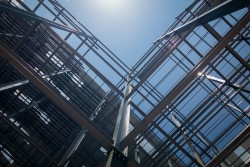Offsite construction is on the rise, with governments globally placing their trust in it as a credible way to deliver more sustainable, high-quality housing quickly. Here experts from structural light steel specialist, horizon offsite – consider if the 'offsite' emphasis should be more on design than construction.
Despite widespread agreement that offsite construction will feature heavily in the industry's future landscape, some professionals question why the focus is primarily on the construction stage.
Getting offsite right from the design stage maximises the potential savings and efficiencies, which influences the overall success of a project. If offsite construction is to meet the industry's challenge of keeping up with demand, then offsite methods need to be baked into the very design of a project. This will inevitably need a change in thinking and mindset.
Design for Manufacture and Assembly Some industry experts are proposing that instead of 'offsite construction' being the accepted term, the industry should start to adopt DfMA, short for Design for Manufacture and Assembly to describe designs that are prepared with ease of manufacture and assembly in mind. In DfMA, all aspects of a building are broken down into prefabricated components, with both the manufacture and assembly designed and optimised by engineering teams. This approach uses design as a way to create manufacturing solutions with standardised parts that are digitally tested, manufactured precisely, and assembled easily. We agree that language is important, however, this is arguably unnecessary and overly prescriptive, excluding projects that integrate elements of MMC at later stages. It is at best premature or overly optimistic. But putting the acronym of DfMA aside, putting design first results in highly efficient assembly lines and production facilities can be further developed, which benefit long-term supplier relationships while improving safety and ensuring consistently superior quality products. Building Information Modelling, or BIM, has an important role to play in enhancing workflows.
Benefits to Assembly and Manufacture Through the use of digital design, offsite manufacturing allows facilities to develop highly precise fabrication methods that can be tested digitally first. The design-first approach means light steel structural components like panelised walls, for example, can be guaranteed to withstand construction pressures and fit seamlessly. Because offsite construction can make use of standardised components, these can be first modelled in a virtual environment and tested to ensure every stage of construction works as it should.
Using design here means any potential issues with the component will be flagged before assembly. This is in contrast to traditional methods, where problems may not be unearthed until construction is in progress onsite. About Horizon Offsite Horizon Offsite is one of Europe's leading players in Offsite Construction and Modern Methods of Construction (MMC), providing a fully accredited structural light gauge steel systems to the residential, industrial, commercial, healthcare and educational sectors.
For more information visit: www.horizonoffsite.ie
Read the full article, go to Light Steel Frame Magazine








